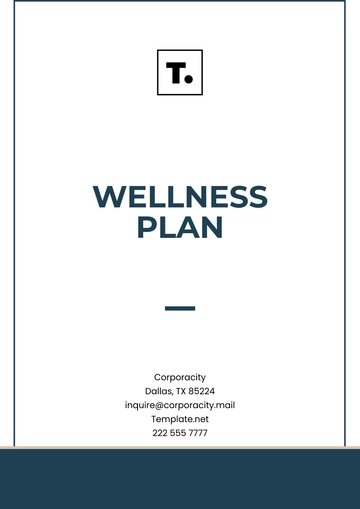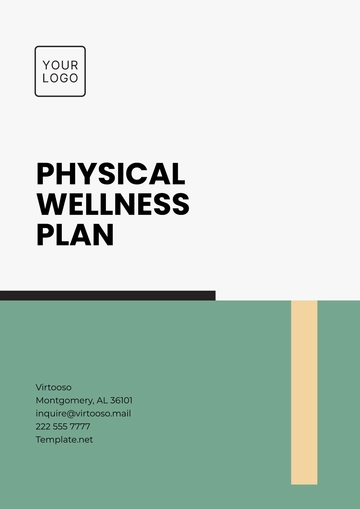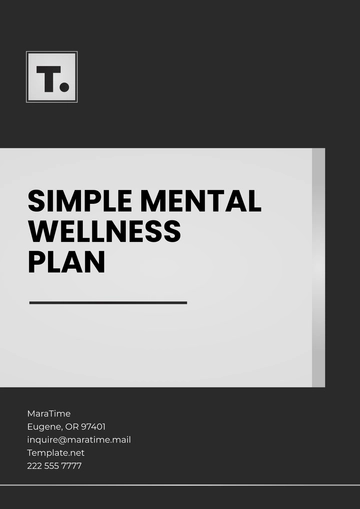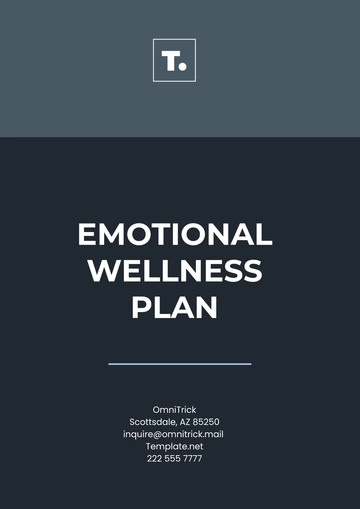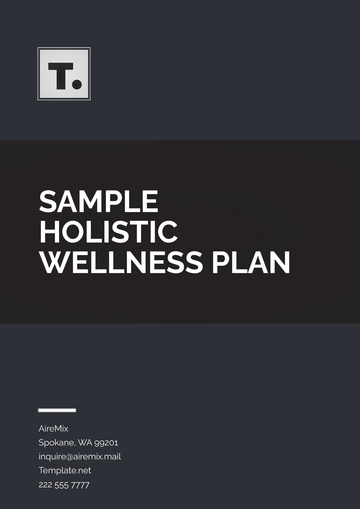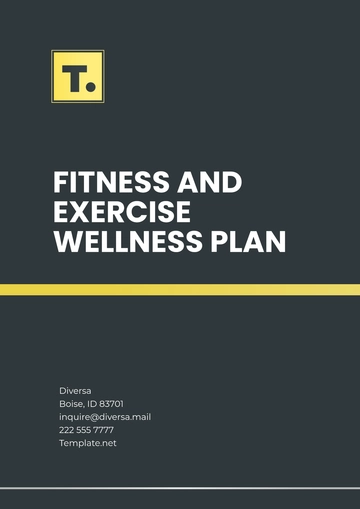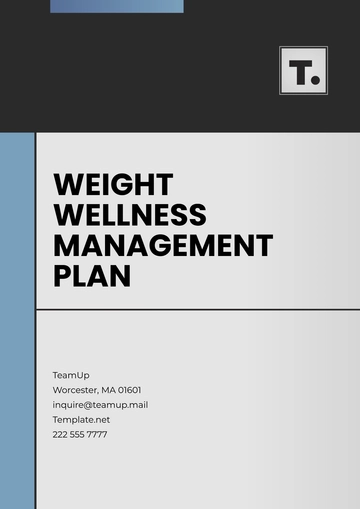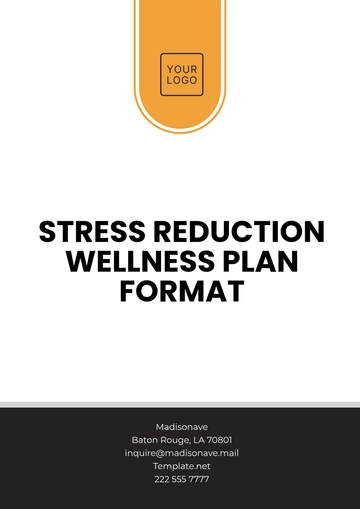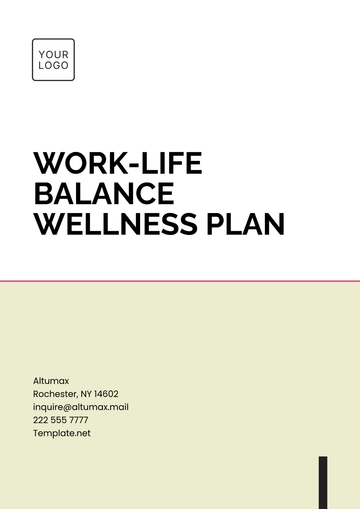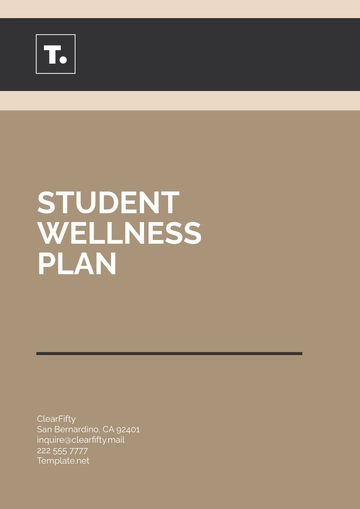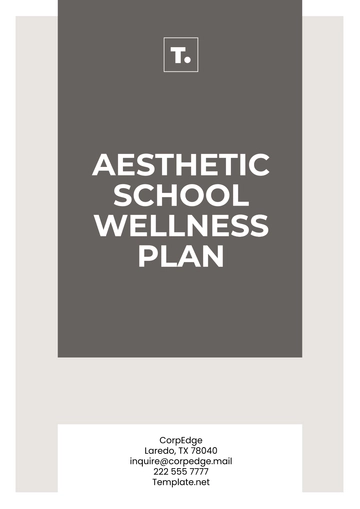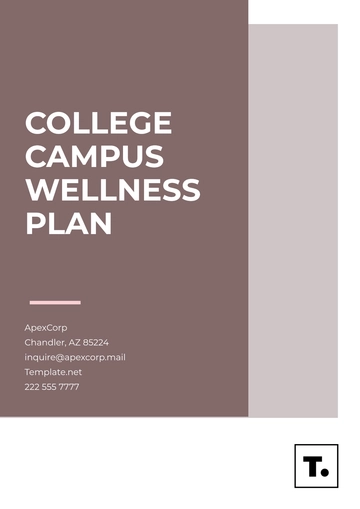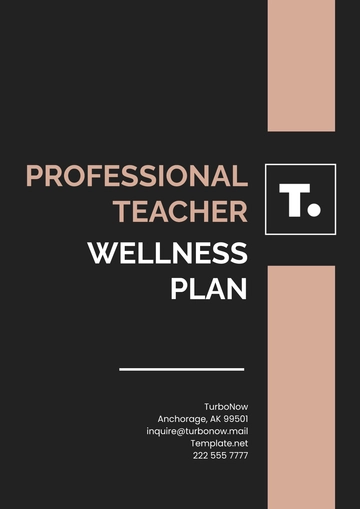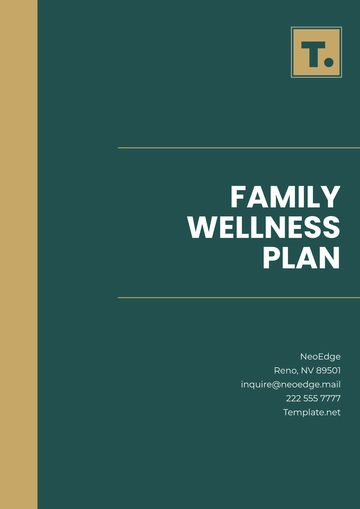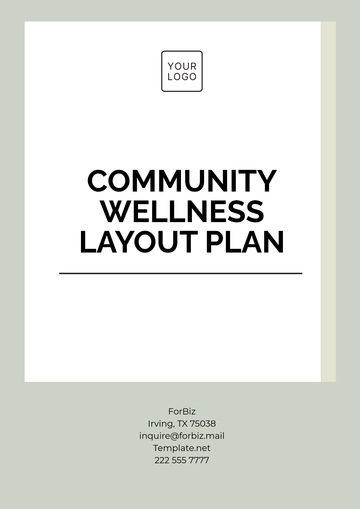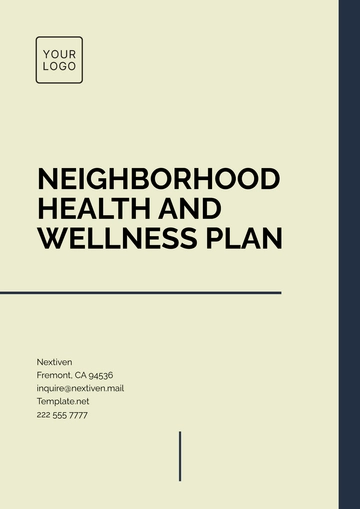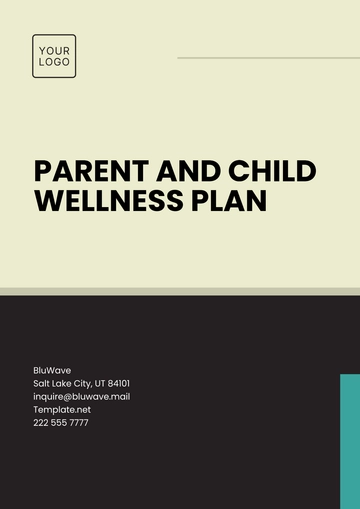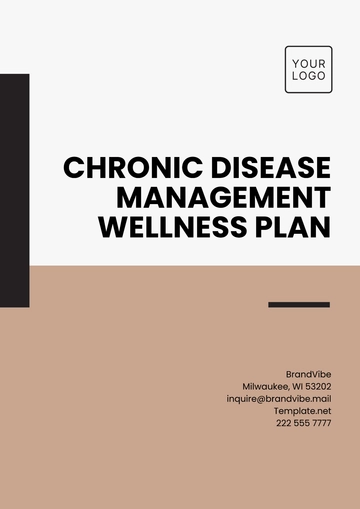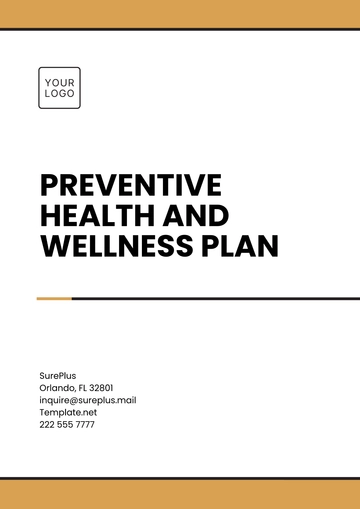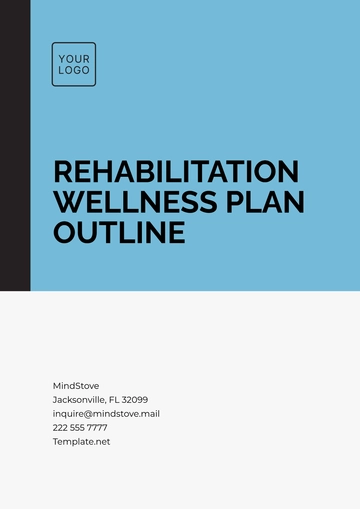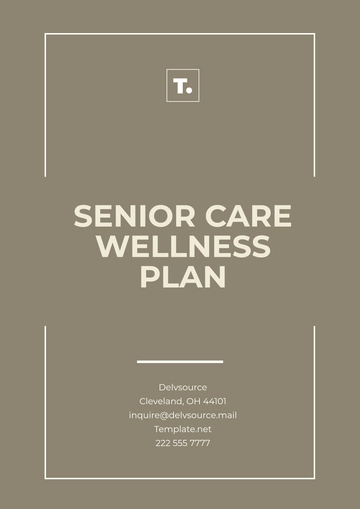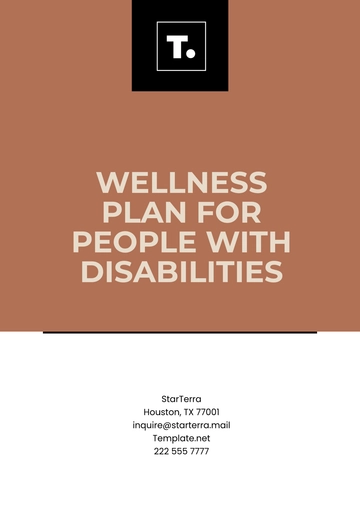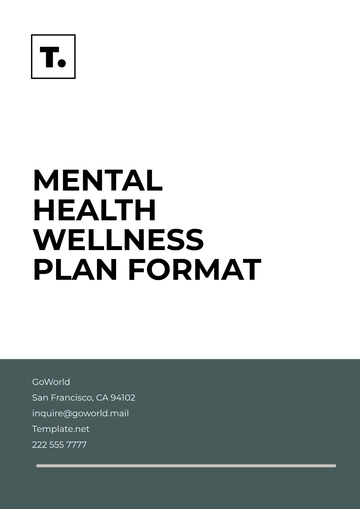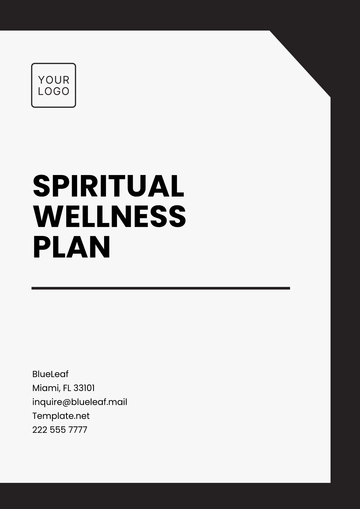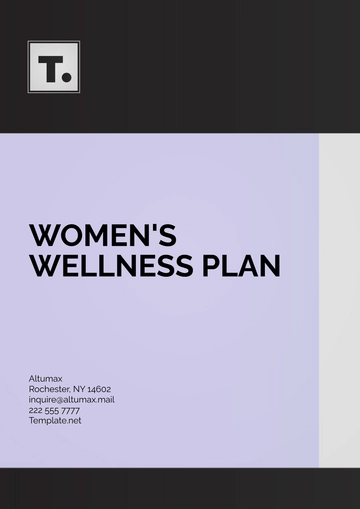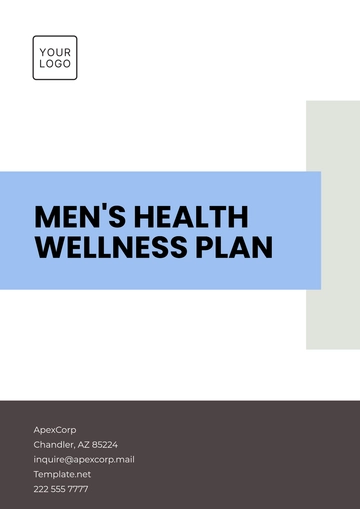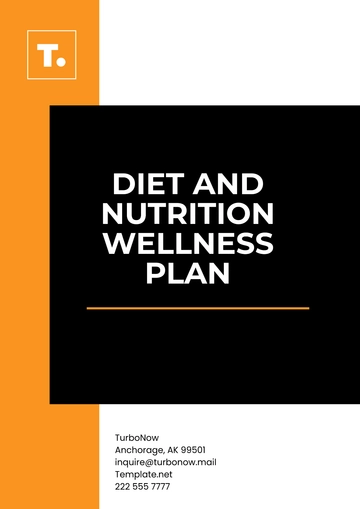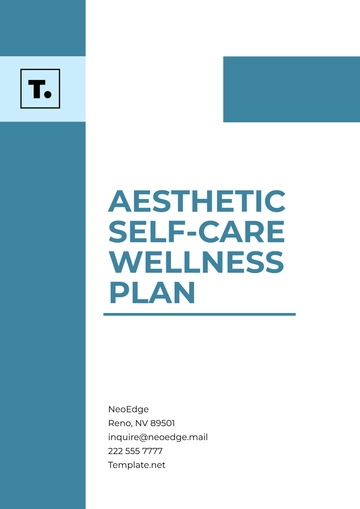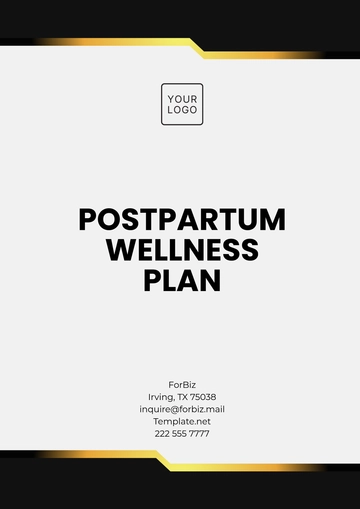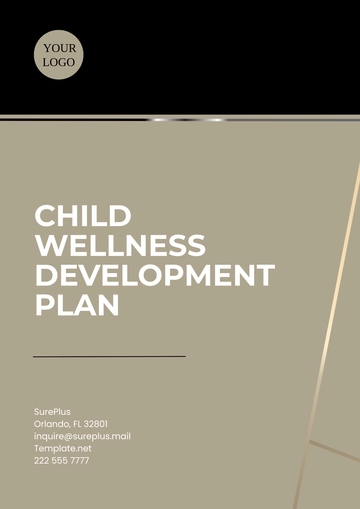Free Neighborhood Health and Wellness Plan
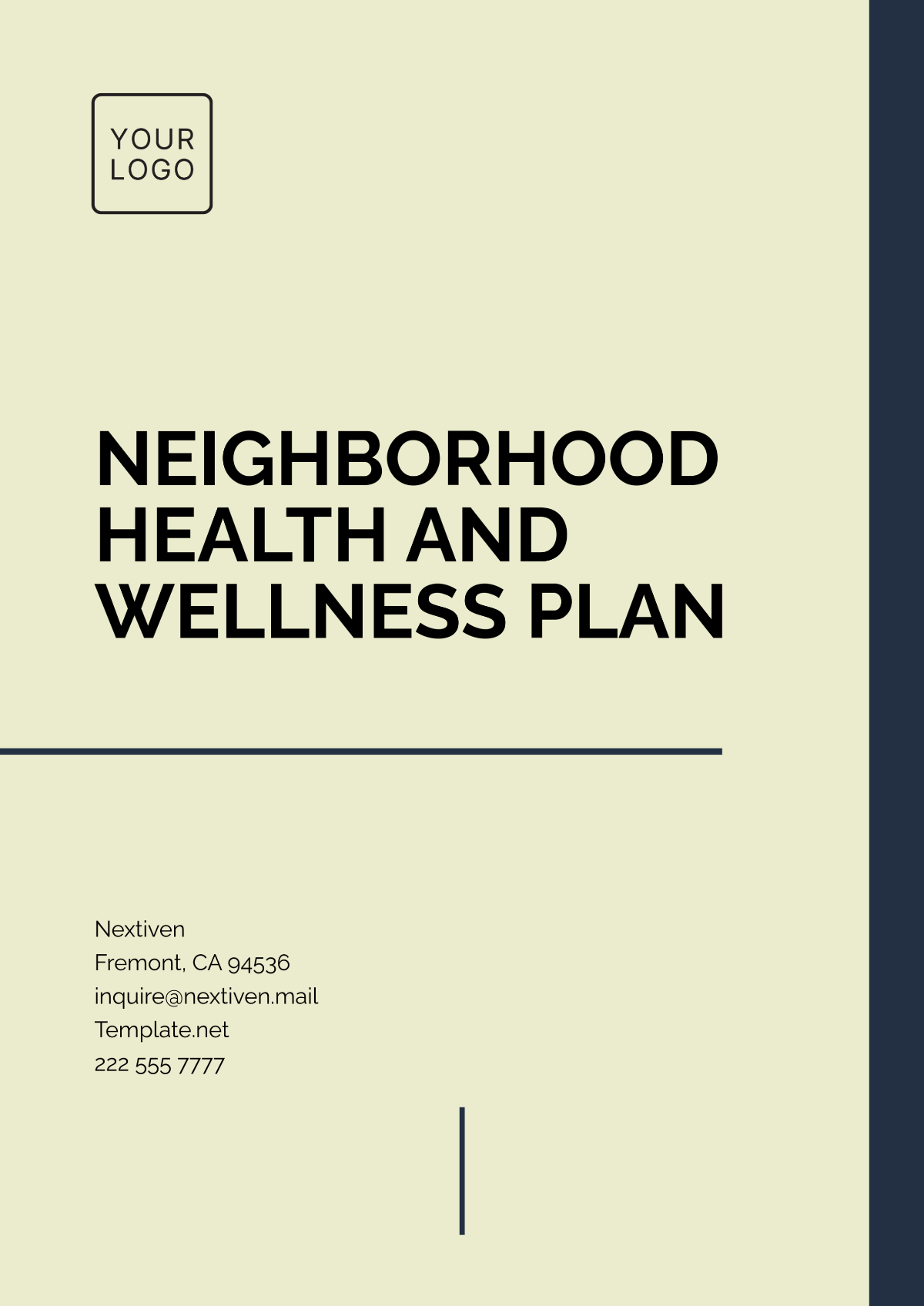
Prepared by: [Your Name]
Company: [Your Company Name]
Date: [Insert Date]
I. Introduction
The Neighborhood Health and Wellness Plan is a comprehensive framework designed to enhance the physical, mental, emotional, and social well-being of residents within a specific neighborhood. This plan aims to create a safe and supportive environment where individuals can thrive, fostering community engagement, promoting healthy living practices, and addressing health disparities. By focusing on prevention, education, and access to health resources, this plan seeks to empower residents to take charge of their health and build a cohesive, resilient community.
II. Vision and Goals
A. Vision
A vibrant, healthy neighborhood where every resident has the resources, support, and opportunities to lead a fulfilling and healthy life.
B. Goals
Improve Access to Health Resources: Ensure that all residents have access to necessary healthcare services, information, and support systems.
Promote Physical and Mental Health: Encourage healthy living through physical activity, balanced nutrition, and mental health awareness.
Strengthen Social Cohesion: Build strong social ties and community networks to foster a sense of belonging and mutual support.
Enhance Environmental Wellness: Create safe, green spaces and improve the built environment to support the well-being of residents.
Support Lifelong Learning and Education: Provide opportunities for residents to develop skills, increase health literacy, and enhance their overall quality of life.
III. Key Areas of Focus and Strategies
A. Physical Health and Wellness
Strategies:
Community Fitness Programs: Offer free fitness classes such as yoga, walking groups, and outdoor exercise programs to encourage physical activity.
Health Screenings and Preventive Care: Partner with local healthcare providers to offer routine health check-ups, screenings for chronic diseases (e.g., diabetes, hypertension), and immunizations.
Nutrition Education: Provide workshops on healthy eating, meal planning, and cooking techniques to promote better nutrition within the community.
Access to Healthy Food: Support initiatives like community gardens, farmer’s markets, and local food cooperatives to improve access to fresh, healthy foods.
Walking and Biking Infrastructure: Improve pedestrian and biking pathways, creating safe and accessible routes for active commuting and recreation.
B. Mental Health and Emotional Wellness
Strategies:
Mental Health Education: Organize community workshops to raise awareness about mental health issues, reduce stigma, and teach coping strategies for stress and anxiety.
Support for Mental Health Services: Collaborate with local counselors, therapists, and support groups to ensure accessible mental health services for residents.
Stress Relief Programs: Offer mindfulness, meditation, and relaxation classes to help residents manage stress.
Peer Support Networks: Establish peer-led support groups for individuals dealing with specific mental health challenges (e.g., grief, anxiety, depression).
Community Outreach: Provide information about available mental health resources through local centers, social media, and events.
C. Social Connectivity and Community Engagement
Strategies:
Community Events and Gatherings: Host social events, festivals, and neighborhood gatherings to encourage interaction and relationship-building among residents.
Volunteer Opportunities: Organize volunteer programs where residents can contribute to neighborhood improvement projects and social services.
Neighborhood Watch Programs: Foster a sense of safety and trust within the neighborhood by establishing neighborhood watch groups that encourage residents to look out for each other.
Family and Youth Support: Provide family-oriented programs, including parenting classes, after-school activities for children, and youth mentorship programs to strengthen family and social bonds.
Inclusive Community Groups: Form groups that cater to diverse interests, such as book clubs, sports teams, or hobby groups, to connect people of different backgrounds and life stages.
D. Environmental Health and Safety
Strategies:
Green Spaces and Parks: Develop and maintain parks, community gardens, and green spaces where residents can relax, exercise, and connect with nature.
Environmental Sustainability: Promote eco-friendly practices, such as recycling, composting, and reducing waste, to enhance the neighborhood’s sustainability.
Public Safety and Lighting: Improve lighting in public spaces and enhance safety measures in parks, streets, and community areas to ensure residents feel safe at all times.
Affordable Housing Initiatives: Advocate for affordable, safe housing options within the neighborhood to ensure that all residents have a stable living environment.
Healthy Building Practices: Encourage energy-efficient, environmentally friendly building practices for new developments and renovations.
E. Lifelong Learning and Personal Development
Strategies:
Health and Wellness Workshops: Offer ongoing educational opportunities related to nutrition, fitness, mental health, and general wellness.
Job Training and Career Development: Provide job readiness programs, resume-building workshops, and career counseling to help residents achieve professional success.
Health Literacy: Distribute easy-to-understand health resources, including pamphlets, guides, and videos, to educate residents about managing chronic conditions and adopting healthier lifestyles.
Adult Education Programs: Collaborate with local educational institutions to offer adult education courses, such as literacy programs, GED preparation, and language classes.
Youth Development Programs: Establish programs aimed at mentoring and guiding young people in the neighborhood, offering life skills workshops, leadership training, and educational support.
IV. Implementation Plan
A. Roles and Responsibilities
Neighborhood Leadership: Provide overall direction and leadership for the implementation of the wellness plan, including mobilizing resources, securing funding, and coordinating efforts.
Local Organizations and Health Providers: Partner with healthcare providers, non-profits, and community organizations to deliver services and programs that support the goals of the wellness plan.
Residents: Actively participate in wellness programs, volunteer, and provide feedback to ensure that the needs of the community are met.
Government and Policy Makers: Advocate for policies that support public health and wellness, provide funding for wellness initiatives, and work to improve the neighborhood’s infrastructure.
B. Timeline
Phase 1 (Month 1-3): Launch the wellness plan, engage community leaders, and begin outreach to residents. Begin providing fitness programs, health screenings, and educational workshops.
Phase 2 (Month 4-6): Expand mental health initiatives, organize community events, and create partnerships with local businesses and organizations.
Phase 3 (Month 7-12): Continue program expansion, monitor progress, and address any barriers or challenges that arise.
Ongoing: Regularly evaluate programs and services, refine strategies, and continue engaging with the community to maintain momentum.
V. Evaluation and Assessment
A. Key Performance Indicators (KPIs)
Program Participation: Track the number of residents participating in wellness programs, health screenings, and fitness activities.
Health Outcomes: Monitor improvements in health metrics such as increased physical activity, reduced rates of chronic diseases, and better mental health outcomes.
Community Engagement: Measure the level of participation in community events, volunteer opportunities, and social support networks.
Resident Satisfaction: Conduct surveys and gather feedback to gauge resident satisfaction with wellness programs and services.
Sustainability: Evaluate the long-term sustainability of wellness initiatives, including funding, participation, and community support.
B. Methods of Evaluation
Surveys and Feedback: Conduct regular surveys to gather input from residents on the effectiveness of wellness programs and identify areas for improvement.
Focus Groups: Hold focus group sessions to gather qualitative feedback on the needs and experiences of community members.
Health Data Tracking: Collect and analyze health data to assess the impact of wellness programs on physical and mental health outcomes.
Program Reviews: Hold periodic reviews of each program to ensure that goals are being met and make adjustments as necessary.
VI. Sustainability Plan
Community Involvement: Empower residents to take ownership of wellness programs, ensuring long-term community engagement and self-sufficiency.
Partnerships and Collaboration: Continue to develop partnerships with local organizations, businesses, and government agencies to provide ongoing support and resources.
Funding and Resource Allocation: Explore funding opportunities through grants, donations, and community fundraising to ensure the sustainability of wellness initiatives.
Ongoing Education: Provide continual education to residents to keep them informed about health and wellness practices and encourage long-term behavioral change.
Adaptive Programs: Ensure that wellness programs remain flexible and adaptable to the evolving needs of the neighborhood.
VII. Conclusion
The Neighborhood Health and Wellness Plan is a comprehensive strategy to create a healthy, connected, and resilient community. By focusing on physical health, mental wellness, social connectivity, environmental health, and personal development, this plan aims to address the holistic needs of residents and foster a thriving neighborhood. The success of this plan will rely on active participation, ongoing evaluation, and collaboration among community members, local organizations, and stakeholders. Together, we can build a healthier and more supportive neighborhood for everyone.
- 100% Customizable, free editor
- Access 1 Million+ Templates, photo’s & graphics
- Download or share as a template
- Click and replace photos, graphics, text, backgrounds
- Resize, crop, AI write & more
- Access advanced editor
You may also like
- Finance Plan
- Construction Plan
- Sales Plan
- Development Plan
- Career Plan
- Budget Plan
- HR Plan
- Education Plan
- Transition Plan
- Work Plan
- Training Plan
- Communication Plan
- Operation Plan
- Health And Safety Plan
- Strategy Plan
- Professional Development Plan
- Advertising Plan
- Risk Management Plan
- Restaurant Plan
- School Plan
- Nursing Home Patient Care Plan
- Nursing Care Plan
- Plan Event
- Startup Plan
- Social Media Plan
- Staffing Plan
- Annual Plan
- Content Plan
- Payment Plan
- Implementation Plan
- Hotel Plan
- Workout Plan
- Accounting Plan
- Campaign Plan
- Essay Plan
- 30 60 90 Day Plan
- Research Plan
- Recruitment Plan
- 90 Day Plan
- Quarterly Plan
- Emergency Plan
- 5 Year Plan
- Gym Plan
- Personal Plan
- IT and Software Plan
- Treatment Plan
- Real Estate Plan
- Law Firm Plan
- Healthcare Plan
- Improvement Plan
- Media Plan
- 5 Year Business Plan
- Learning Plan
- Marketing Campaign Plan
- Travel Agency Plan
- Cleaning Services Plan
- Interior Design Plan
- Performance Plan
- PR Plan
- Birth Plan
- Life Plan
- SEO Plan
- Disaster Recovery Plan
- Continuity Plan
- Launch Plan
- Legal Plan
- Behavior Plan
- Performance Improvement Plan
- Salon Plan
- Security Plan
- Security Management Plan
- Employee Development Plan
- Quality Plan
- Service Improvement Plan
- Growth Plan
- Incident Response Plan
- Basketball Plan
- Emergency Action Plan
- Product Launch Plan
- Spa Plan
- Employee Training Plan
- Data Analysis Plan
- Employee Action Plan
- Territory Plan
- Audit Plan
- Classroom Plan
- Activity Plan
- Parenting Plan
- Care Plan
- Project Execution Plan
- Exercise Plan
- Internship Plan
- Software Development Plan
- Continuous Improvement Plan
- Leave Plan
- 90 Day Sales Plan
- Advertising Agency Plan
- Employee Transition Plan
- Smart Action Plan
- Workplace Safety Plan
- Behavior Change Plan
- Contingency Plan
- Continuity of Operations Plan
- Health Plan
- Quality Control Plan
- Self Plan
- Sports Development Plan
- Change Management Plan
- Ecommerce Plan
- Personal Financial Plan
- Process Improvement Plan
- 30-60-90 Day Sales Plan
- Crisis Management Plan
- Engagement Plan
- Execution Plan
- Pandemic Plan
- Quality Assurance Plan
- Service Continuity Plan
- Agile Project Plan
- Fundraising Plan
- Job Transition Plan
- Asset Maintenance Plan
- Maintenance Plan
- Software Test Plan
- Staff Training and Development Plan
- 3 Year Plan
- Brand Activation Plan
- Release Plan
- Resource Plan
- Risk Mitigation Plan
- Teacher Plan
- 30 60 90 Day Plan for New Manager
- Food Safety Plan
- Food Truck Plan
- Hiring Plan
- Quality Management Plan
- Wellness Plan
- Behavior Intervention Plan
- Bonus Plan
- Investment Plan
- Maternity Leave Plan
- Pandemic Response Plan
- Succession Planning
- Coaching Plan
- Configuration Management Plan
- Remote Work Plan
- Self Care Plan
- Teaching Plan
- 100-Day Plan
- HACCP Plan
- Student Plan
- Sustainability Plan
- 30 60 90 Day Plan for Interview
- Access Plan
- Site Specific Safety Plan
